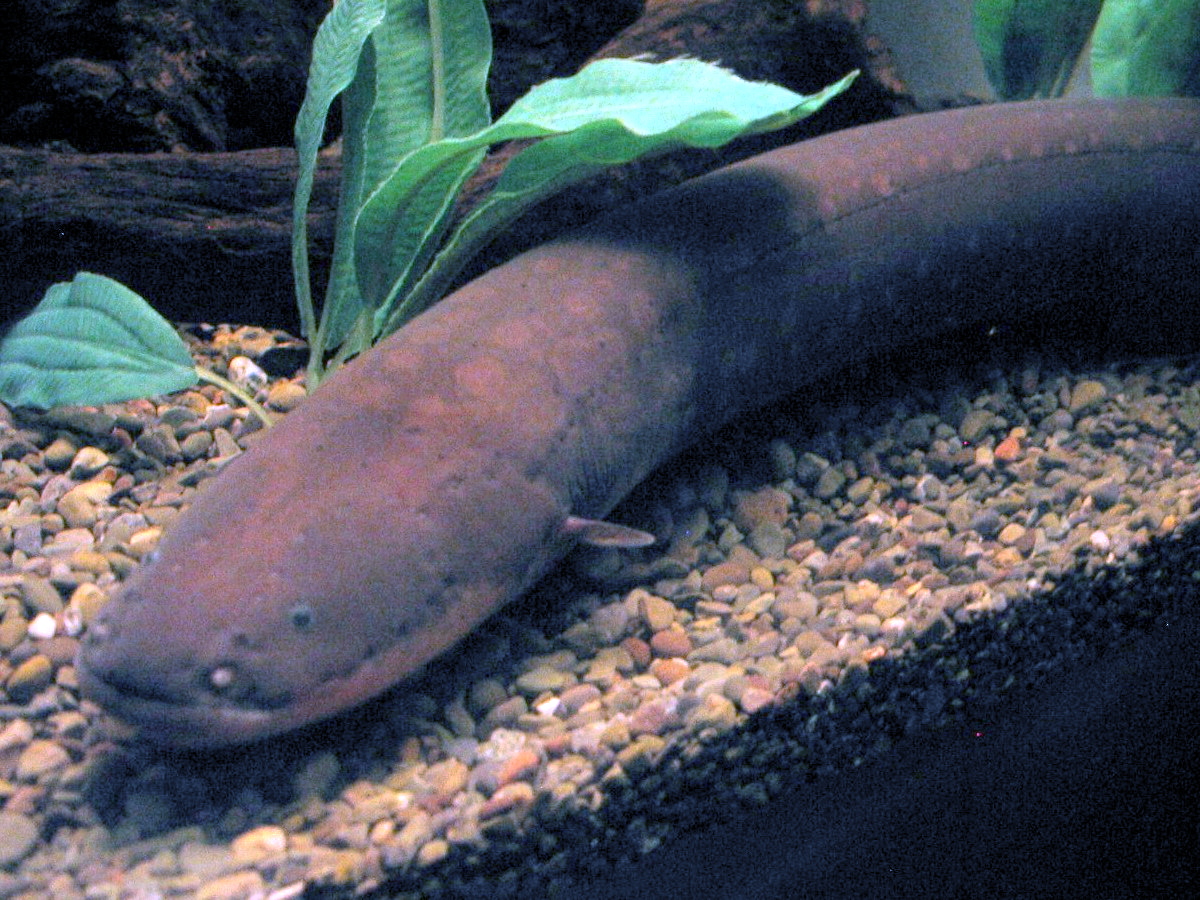Electric eels, known scientifically as Electrophorus electricus, are fascinating creatures capable of generating powerful electrical discharges that they use for both hunting and self-defense. Though they are not true eels (they belong to a family of knifefish rather than true eels), electric eels are the best-known example of animals that produce electricity, a trait they share with a few other aquatic species. They can release electric shocks powerful enough to stun prey or deter predators, with some discharges reaching up to 860 volts—an impressive feat considering the size of these animals.
To understand how electric eels generate electricity, we need to delve into the unique biology and specialized physiology that allows them to produce and control electrical charges. In this guide, we’ll explore the cellular mechanisms that enable electric eels to generate electricity, how this electricity is used in the wild, and the evolutionary significance of this remarkable adaptation.
Anatomy of an Electric Eel: Key Components for Electricity Generation
Electric eels have a specialized anatomy that allows them to generate, store, and discharge electrical energy. Their long, slender bodies contain three main organs that are responsible for their electric capabilities: the Main organ, the Hunter’s organ, and the Sachs’ organ. Together, these organs make up about 80% of the eel’s body, allowing it to produce electrical charges for various purposes.
1. The Electric Organs
The electric organs of an electric eel are composed of thousands of specialized cells known as electrocytes. These cells are arranged in series within the eel’s electric organs, enabling the creation of a powerful electric field when they work together. Each organ has a specific function in generating different types of electrical discharges, allowing the eel to control the voltage and intensity of the shocks it produces.
- Main Organ: This organ is responsible for generating the strongest electric discharges, which can reach up to 860 volts. The Main organ is used primarily for defense and stunning prey.
- Hunter’s Organ: This organ also generates high-voltage discharges, though at a lower intensity than the Main organ. The Hunter’s organ works in conjunction with the Main organ to increase the electric eel’s overall power.
- Sachs’ Organ: Unlike the Main and Hunter’s organs, the Sachs’ organ produces low-voltage discharges, typically around 10 volts or less. This lower voltage is used primarily for navigation and communication within the eel’s environment.
These organs allow electric eels to produce both high-voltage and low-voltage discharges, giving them the ability to adapt their electrical output based on their needs in a given situation.
2. Electrocytes: The Power Cells
The electrocytes within the electric organs are the primary cells responsible for generating electricity. Electrocytes are large, flat cells that are specialized to store and release electrical charges. They are derived from muscle cells but have evolved to function in a unique way.
When an electric eel wants to generate an electric discharge, it activates these electrocytes by sending a signal from its nervous system. This signal triggers the electrocytes to open ion channels, creating a flow of ions (charged particles) across the cell membranes. This ion movement generates an electrical potential difference, or voltage, across the electrocytes, similar to the way a battery produces voltage by moving charges from one terminal to another.
In an electric eel, thousands of electrocytes are stacked together, each adding a small voltage. The collective action of these electrocytes results in a significant cumulative voltage, which the eel can use to create a powerful shock.
How Electrocytes Generate Electrical Potential
The generation of electricity in electrocytes relies on the controlled movement of ions, particularly sodium (Na⁺) and potassium (K⁺) ions. This movement of ions creates an electric potential across the membrane of each electrocyte, allowing the eel to accumulate and release a charge.
1. Resting State: Polarization
In their resting state, electrocytes maintain a polarized state, meaning that there is a difference in electrical charge across their cell membranes. This polarization is achieved through ion pumps, which actively transport sodium ions out of the cell and potassium ions into the cell. This results in a negative charge inside the cell and a positive charge outside, creating a potential difference across the membrane.
2. Activation and Ion Flow
When an electric eel wants to discharge electricity, it sends a signal through its nervous system that causes the electrocytes to open their ion channels. These channels allow sodium ions to flow back into the electrocytes, causing a rapid depolarization of the cells. This shift in charge generates an electric current across the electrocytes.
In a single electrocyte, the voltage generated might be only around 0.15 volts. However, because thousands of electrocytes are arranged in series, their combined action produces a much higher voltage, often reaching hundreds of volts. This series arrangement functions much like the cells in a battery, where each cell contributes to the total voltage.
3. Discharge: Release of Electrical Energy
Once the electrocytes are activated, they release their stored energy in the form of an electric discharge. The electric eel directs this discharge through its body, and the current is transmitted into the surrounding water. This discharge is powerful enough to stun prey, defend against predators, or communicate with other electric eels.
The eel can control the intensity and frequency of its discharges by modulating the number of electrocytes it activates and the duration of activation, allowing it to use electricity in different ways depending on its needs.
How Electric Eels Use Electricity in the Wild
Electric eels use their electric discharges in several ways, primarily for hunting, self-defense, and navigation. The different electric organs allow them to generate either high-voltage or low-voltage discharges tailored to specific situations.
1. Hunting and Stunning Prey
One of the primary uses of electricity in electric eels is to hunt and capture prey. When an eel detects potential prey nearby, it can deliver a powerful, high-voltage shock to immobilize the animal. The electric shock overwhelms the prey’s nervous system, causing its muscles to contract uncontrollably. This involuntary muscle spasm makes the prey easier to capture and consume.
Electric eels can also use electricity to locate hidden prey. By releasing short bursts of low-voltage discharges, the eel can stimulate the movement of nearby animals, which reveals their location. This method is especially useful for detecting prey that may be hiding in mud or under vegetation.
2. Self-Defense
Electric eels are vulnerable to larger predators, including some species of fish, birds, and even humans. To deter potential threats, electric eels can deliver powerful electric shocks that discourage predators from approaching. The high-voltage discharges from their Main and Hunter’s organs can cause pain and confusion in predators, making it an effective defense mechanism.
Electric eels have also been observed using repeated electric shocks to fend off threats in sustained attacks. This ability to deliver multiple shocks in quick succession makes them formidable opponents to any predator attempting to capture them.
3. Navigation and Communication
In addition to high-voltage discharges for hunting and defense, electric eels use low-voltage pulses from the Sachs’ organ for navigation and communication. These low-voltage discharges help the eel detect objects in its environment, functioning similarly to echolocation in bats. By sensing how these electric fields interact with objects, electric eels can navigate murky waters or locate obstacles.
Electric eels also use these low-voltage signals to communicate with each other, particularly during mating or territorial interactions. The frequency and pattern of the pulses can convey different messages, allowing electric eels to interact and coordinate with one another.
Evolutionary Advantages of Electricity Generation
The ability to generate electricity provides electric eels with several evolutionary advantages, primarily in terms of hunting, self-defense, and survival in their unique habitat.
1. Efficient Predation in Low-Visibility Environments
Electric eels inhabit murky freshwater rivers and floodplains in the Amazon and Orinoco basins of South America. In these environments, visibility is often limited, making conventional hunting techniques challenging. By using electric discharges to locate and stun prey, electric eels can hunt effectively in low-visibility conditions.
2. Enhanced Protection Against Predators
The high-voltage shocks generated by electric eels are a powerful deterrent against would-be predators. This capability reduces the number of animals that would attempt to prey on electric eels, thus increasing their chances of survival.
3. Environmental Adaptation
Electric eels are well adapted to the slow-moving waters of their natural habitat. Their electric organs allow them to navigate, hunt, and defend themselves in an environment where other senses, such as vision, may be less effective. The adaptation to produce electricity provides a unique niche advantage, reducing competition with other predatory species.
The Science of Bioelectricity and Future Applications
The study of electric eels and their electricity-generating capabilities has inspired scientists to explore bioelectricity and its potential applications in medicine and technology. Understanding how electric eels produce and control electricity offers insights that could lead to breakthroughs in areas such as bio-inspired energy storage and medical devices.
Potential Applications in Energy and Medicine
- Bio-Batteries: Scientists are studying electrocytes to develop bio-inspired batteries that mimic the eel’s electricity generation. These bio-batteries could potentially be used to power medical implants or portable devices.
- Medical Implants: The ability to create small, controlled electric currents could lead to advancements in implant technology. For example, bioelectric stimulation could help power pacemakers or other medical implants without the need for external batteries. Inspired by the electric eel’s ability to generate low-voltage currents for navigation, researchers are exploring ways to harness similar bioelectric principles to create self-sustaining energy sources for medical devices.
- Regenerative Medicine and Healing: Bioelectricity plays a role in cellular regeneration and tissue repair, and electric fields have been shown to stimulate healing processes in certain types of cells. Studying electric eels’ use of low-voltage signals to navigate and communicate could provide clues for developing new therapies that use mild electric fields to promote tissue regeneration, wound healing, or nerve repair.
- Robotics and Soft Electronics: Electric eels have inspired the development of soft, flexible energy sources in robotics. By replicating the eel’s electrocyte structures in synthetic materials, researchers can create flexible, durable power sources that could be integrated into soft robotic systems or wearable technology.
- Understanding Electrocyte Biology for Therapeutic Uses: Research on the unique cellular structure and ion channel behavior of electrocytes could deepen our understanding of neurobiology and muscular responses. Since electrocytes evolved from muscle cells, understanding how they’ve adapted to generate electricity may lead to new ways to address neuromuscular disorders and to modulate electrical impulses in the human body.
Challenges in Bioelectricity Research
While the potential applications of bioelectricity are exciting, there are challenges in replicating the mechanisms that allow electric eels to generate electricity. Electrocytes are highly specialized cells, and recreating their structure and efficiency outside of a biological context is difficult. Researchers are still working on developing synthetic materials and devices that can mimic the efficiency and control of the electric eel’s natural system.
Conclusion
Electric eels are remarkable animals, capable of generating and controlling electricity through a specialized anatomy that includes electrocytes and dedicated electric organs. Their ability to produce electricity provides them with powerful advantages in their native environments, allowing them to hunt, defend themselves, navigate, and communicate in ways that few other creatures can replicate. By carefully arranging electrocytes in series within their electric organs, electric eels create a potent system for generating electrical charges that can reach up to 860 volts.
This unique capability not only highlights the wonders of evolution but also demonstrates how organisms adapt to complex environments with specialized traits. The electric eel’s efficient bioelectric system has inspired researchers to explore bio-inspired technologies that could one day power medical devices, robotics, and even regenerative therapies. As we continue to study these fascinating creatures, electric eels remain a testament to nature’s ingenuity, revealing the incredible potential of bioelectricity and offering insights that could shape future advancements in science and technology. Through their mastery of electrical energy, electric eels captivate both scientists and laypeople alike, reminding us of the profound mysteries that still exist in the natural world.




